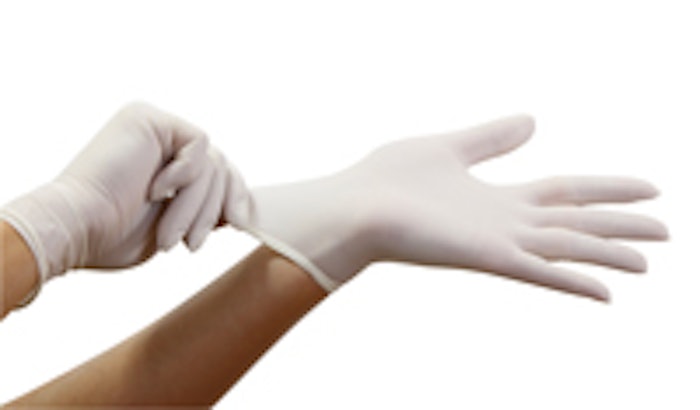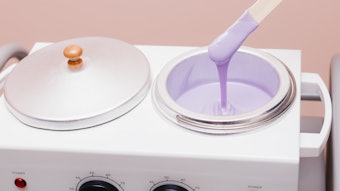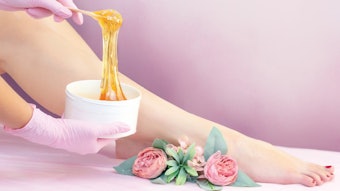
As many spa professionals know, depilation is no longer considered a trend, but a mainstay of a successful skin care facility’s menu. As long as there is hair where people don’t want it, depilation is here to stay. Hair removal is a service that crosses all boundaries, races and religions as it has quickly become an important part of today’s beauty regimen for women and men of all ages.
The real trend in depilation today is positioning this service as a true beauty treatment—an additional opportunity to care for the skin, which goes hand-in-hand with caring about your clients’ health and safety. And one of the most key and timely factors in this trend is the importance of sanitation.
Earlier this year, the industry experienced an uproar as state officials in New Jersey made moves to ban Brazilian and other waxing services done by estheticians. These days, clients are privy to a massive amount of information at their fingertips via the Internet, and, within hours, the story spread like wildfire. Though ultimately New Jersey backed off the ban in favor of “reviewing and establishing safeguards for those who provide the service,” there are still lawsuits being persued against the New Jersey state cosmotology board.
When a Google search on the term “dangers of Brazilian waxing” leads to more than 35,000 hits, it should ignite a spark of urgency for skin care professionals to take the sanitation of hair removal services seriously. Commit to bringing your depilation services to the highest level of integrity, and work to educate your clients on your spa’s commitment. With hair removal being such a lucrative spa offering, skin care professionals don’t want consumers to be afraid to receive this service. It’s important to encourage your state boards to be proactive instead of reactive in these instances, especially as it is well-known that every state board is different. To find contact information for your state’s esthetic governing board, log on to www.SkinInc.com/statelicensing.
It is also essential for spa industry professionals to take the time to rebuild and re-establish the integrity behind this skin care service. Although in the past depilation was thought of as an accessory or an add-on treatment—or even simply as a really painful experience—today’s techniques and products have changed that positioning. Depilation is a profitable staple of the spa menu, and to keep it that way, professionals must take their clients’—and their own—health and well-being very seriously.
This is an opportunity for spa professionals to not only go back and re-evaluate the service tactics being used in depilation services, but also to create a dialogue with clients about the level of sanitation you provide. It’s about going back to basics, and really taking pride and setting high standards for your hair removal services.
Careful considerations
The Centers for Disease Control and Prevention (CDC) has published guidelines requiring public service workers, which includes spa professionals, to assume all human blood and bodily fluids are infectious for bloodborne pathogens. As hair removal services can deal with sensitive areas and bodily fluids, incorporating sanitation measures in your spa that take bloodborne pathogens under careful consideration can be a boon to the safety of your depilation services.
According the United States Department of Labor Occupational Safety and Health Adminstration (OSHA), bloodborne pathogens are transmitted via the eye, mouth and other mucous membranes. As hair removal services can be done near or on all of these areas, make sure you and all your spa team members know the facts.
The two most important bloodborne pathogen viruses for spa professionals to guard against are hepatitis HBV, which can be transmitted through saliva, semen, vaginal fluid and needles; and HIV, which is transmitted via personal contact with an infected person through nonintact skin contacting nonintact skin. According to the New York Health Department, “There are a few studies that indicate that HPV can be spread by inanimate objects, such as underwear or gloves.” So, in order to maintain the safest environment possible for your clients, take the time to practice proper sanitary precautions that defend against these potenital infections.
Basic esthetic sanitation
There are many basic sanitary precautions that, even if they seem elementary, are important to review in your spa. Reminders, such as these from Pivot Point International’s Esthetic Education Training Manual, are helpful in keeping sanitation at the top of everyone’s mind.
- Sanitize all surfaces before and after each service.
- Wash hands before and after each service. Bar soaps can harbor bacterial liquids, so it may be better to use hand soap and sanitizers.
- Use a fresh pair of single-use, disposable gloves for each client.
- Provide freshly laundered linens for each client.
- Sanitize the bed, treatment table or treatment surface with disinfectant spray before putting down new linens.
- Use a fresh spatula every time you dip for more product.
According to Milady’s Hair Removal Education Manual, your first move when offering any hair removal service should be properly sanitizing and disinfecting yourself, your treatment area, your tools and any other equipment you’ll be using. Remember, sanitation is the significant reduction of pathogens on a surface through cleaning. This includes hand-washing and using gloves, antiseptics and disinfectants.
Antiseptics prevent, retard or stop bacterial growth. Most often, they should be safe to use on the skin. However, disinfectants should not be used on the skin. Disinfectants are used to kill bacteria and certain viruses on nonporous surfaces and tools.
When using gloves, a new pair should be donned with each new client, and they should be powder-free. This is not only for the safety of clients, but also the safety of your team members. If a spa professional is expected to have contact with blood or any other potentially infectious bodily fluids, materials or contaminated surfaces, it is completely necessary that the employee wear gloves. Also, ask all your clients if they are allergic to latex, as this is the material used for many disposable gloves. If so, the technician should use synthetic gloves as an alternative, so be sure to always have both in stock. As a spa professional, it is vital for you to set this standard and let your clients know you follow universal precautions.
Next, consider sterilization. The goal of sterilization is the complete elimination of all forms of bacteria, spores and viruses. Sterilizing your implements, tools and equipment is a temporary state that should be habitual and ongoing in your spa.
There are two types of sterilization: physical and chemical. Sterilization agents include steam heat steriliztion, which should be done at 250°F; dry heat sterilization, which should be done at 340°F; irradiation light rays, which use ultraviolet light with alpha, beta and gamma rays; and boiling, which should be done at 212°F. These methods of sterilization are designed to kill spores and viruses that antiseptics and disinfectants cannot.
State board regulations regarding protection from bloodborne pathogens states the ideal temperature for pathogens or bacterial growth is between 40–140°F. However, to ensure you are killing any potential viruses or bacterias, your products should be sterilized at a temperature exceeding 212°F. Obviously, 212°F is quite hot, and if your wax pot is set at that ideal sterilization temperature, you may very well be compromising the integrity of your clients’ skin.
So what’s the best way to ensure sterilization without burning clients? Testing the wax on your wrist before you apply it to the client’s skin helps ensure it’s at a comfortable temperature, as well as engaging the client by testing it on her wrist so she will be aware of the temperature. However, using multiple spatulas is really the only way to ensure a truly sanitary hair removal experience.
Double-dipping, or using the same spatula to dip wax from pot more than once, continues to be an area of concern in depilation. Unless you test your wax each and every time you use it, there is no way to be certain your product hasn’t been contaminated with infected bloodborne pathogens. And if your wax had been contaminated, it significantly increases the risk of cross-contamination if you double-dip. Typically, switching to a new spatula each time you dip into the wax eliminates this risk, so why not do it? Though its true supply costs can add up, many vendors and suppliers are willing to work with spas to provide such supplies at minimal—and sometimes even no—cost. So when supplies are available at such a reduced cost, why take the risk?
It may also be a good idea to conduct a sterilization experiment on your own: Submit a tin of your wax, some tools or other hair removal implements for bacteria and infectious matter testing. This is a service available through the CDC, and it gives you a good idea of how effective you are being with your sanitation, disinfection and sterilization efforts.
However, to really create the best environment for hair removal services, spa professionals need to work together. If everyone in the industry bans together in requesting sterilization standardizations from their state boards, OSHA and the CDC, it’s possible the still-unanswered questions of sterilization temperatures and other techniques will finally be settled.
Take the time
Spa professionals have to be serious about the health and safety of themselves and their clients. Clients deserve to be offered their hair removal services in a safe and sanitary environment, and if they continue to be educated and exposed to negative information regarding contamination in the depilation industry, would they trust you to return for more services? Would you if you were in their shoes?
Depilation can be one of the most aggressive skin services out there right now, and it is also one of the most
lucrative, so it is vitally important for you to take your services to the highest safety standards. In doing so, you will care for your client and care for your business.










